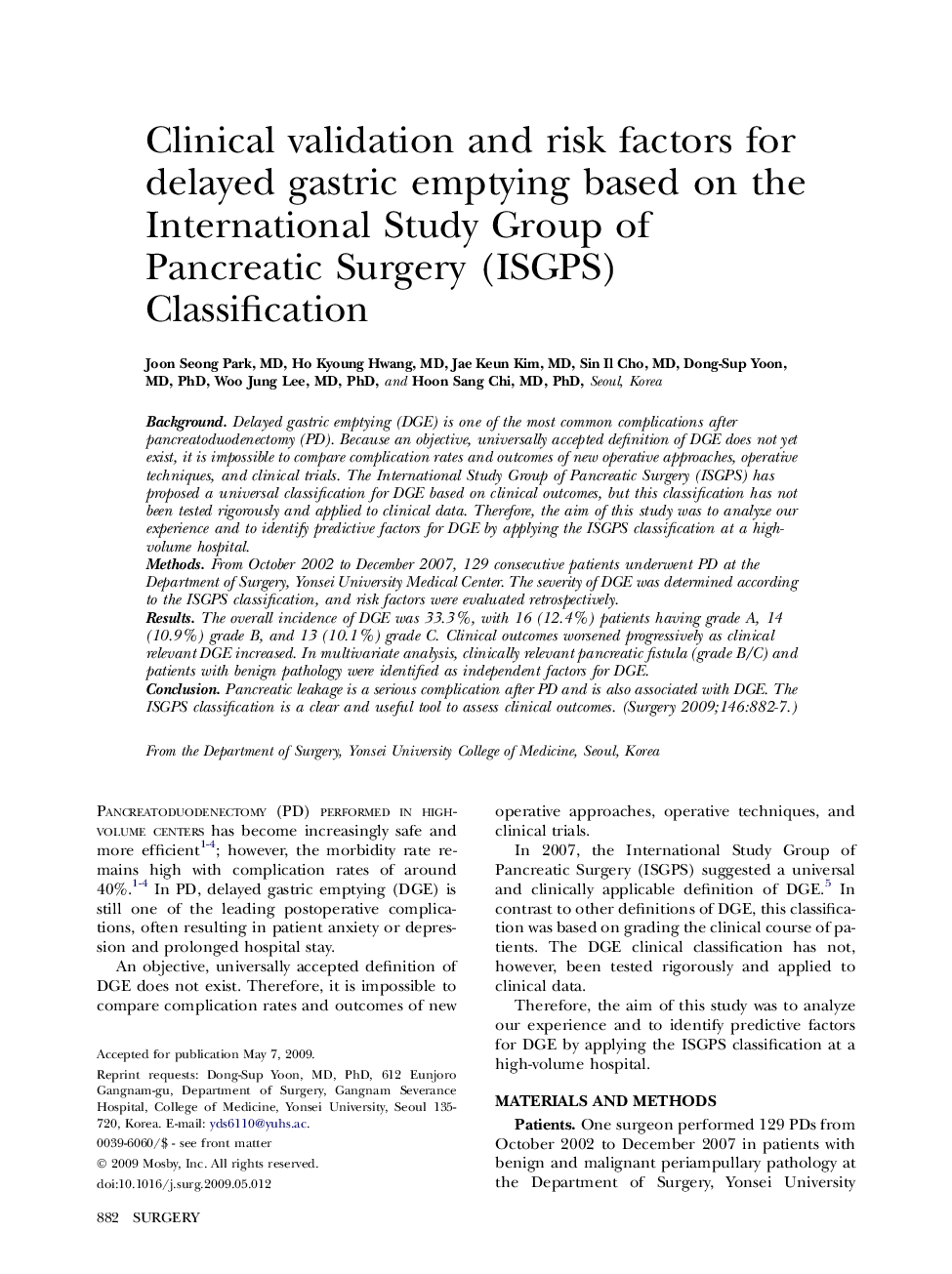| Article ID | Journal | Published Year | Pages | File Type |
|---|---|---|---|---|
| 4309420 | Surgery | 2009 | 6 Pages |
BackgroundDelayed gastric emptying (DGE) is one of the most common complications after pancreatoduodenectomy (PD). Because an objective, universally accepted definition of DGE does not yet exist, it is impossible to compare complication rates and outcomes of new operative approaches, operative techniques, and clinical trials. The International Study Group of Pancreatic Surgery (ISGPS) has proposed a universal classification for DGE based on clinical outcomes, but this classification has not been tested rigorously and applied to clinical data. Therefore, the aim of this study was to analyze our experience and to identify predictive factors for DGE by applying the ISGPS classification at a high-volume hospital.MethodsFrom October 2002 to December 2007, 129 consecutive patients underwent PD at the Department of Surgery, Yonsei University Medical Center. The severity of DGE was determined according to the ISGPS classification, and risk factors were evaluated retrospectively.ResultsThe overall incidence of DGE was 33.3%, with 16 (12.4%) patients having grade A, 14 (10.9%) grade B, and 13 (10.1%) grade C. Clinical outcomes worsened progressively as clinical relevant DGE increased. In multivariate analysis, clinically relevant pancreatic fistula (grade B/C) and patients with benign pathology were identified as independent factors for DGE.ConclusionPancreatic leakage is a serious complication after PD and is also associated with DGE. The ISGPS classification is a clear and useful tool to assess clinical outcomes.
